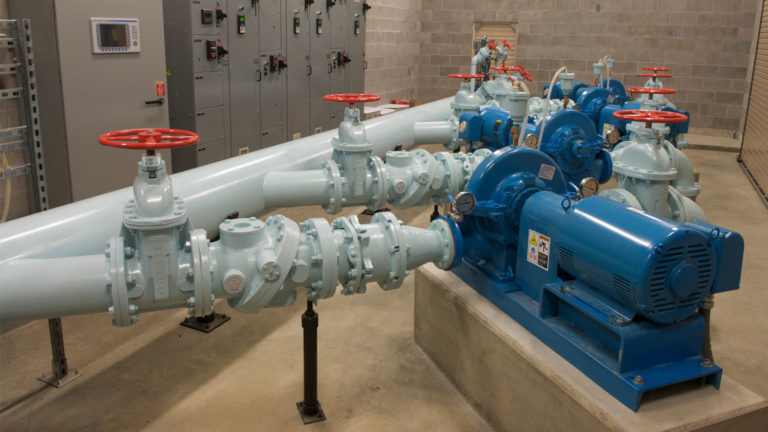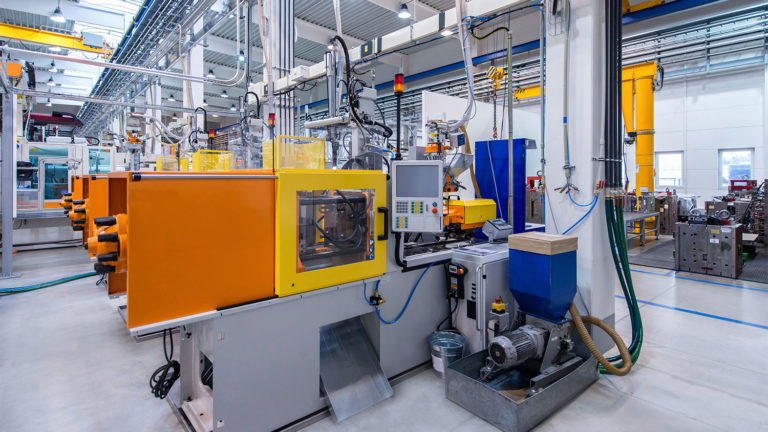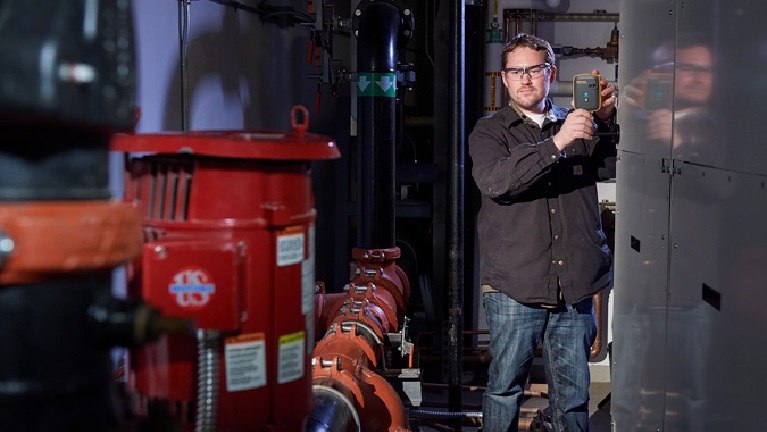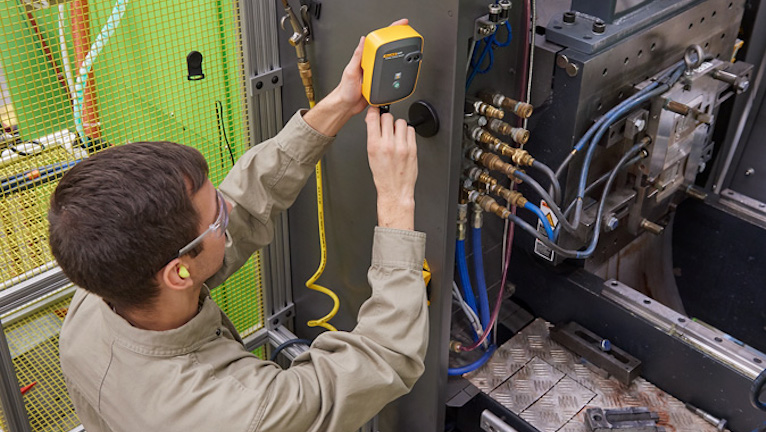Manufacturing’s transformative path to the IIoT
Examining key drivers to help us forecast what’s ahead
Manufacturing operations are predicted to be one of the biggest winners of the Industrial Internet of Things (IIoT) transformation. Using condition monitoring sensors and software, innovators have an opportunity to wirelessly leapfrog over brownfield infrastructure, automate asset-health data collection, and feed it into predictive maintenance analytics engines. Machine failures could be predicted well in advance and condition-based maintenance would become the norm, allowing operations to achieve higher uptime and greater overall efficiency.
With that goal in mind, most facilities have begun the transformation to digitalized manufacturing. But not many have managed to fully integrate across aging systems or accumulate enough accurate data to fuel predictive data analysis. People are now asking when the dividends will arrive.
Perhaps we can use hindsight and recent manufacturing operations history to better predict what will happen next and how soon. Looking backwards, we can piece together the biggest drivers for the IIoT. By examining the reasons why things have changed, we can assess our level of satisfaction with the status quo, retool our expectations and re-gear for what’s coming.
Here’s a look at how it all started and where we may be headed.
Beginnings
Since their introduction in the 1960s, Distributed Control Systems (DCS) and SCADA (supervisory control and data acquisition) systems have provided increasingly sophisticated controls and industrial automation for process, discreet, and other manufacturing. Industrial automation drove the in-line sensor business and spurred the development of programmable logic controllers (PLCs), variable frequency drives (VFDs), human-machine interfaces (HMIs), and other control aspects. Those systems are still active as we enter the year 2020, but the cost of retrofitting them has driven exploration of other ways to monitor, if not necessarily control, production.
Circa 2000-2010—Key drivers line up
- Baby boomers began retiring, often without much knowledge transfer. At the same time, fewer young people chose manufacturing careers, creating a skills shortage
- Increased global competition reduced profit margins and necessitated higher plant efficiency and longer asset lifespans
- The Great Recession of 2008 slowed manufacturing growth to a crawl for several years, forcing shutdowns and consolidations
- The productization and affordability of sensor chip, mobility, and cloud technology completely changed consumer behavior and the use cases for electronics
- Smart Home, Smart City, and other mass consumer IoT technology created excitement and context for “the cloud”
- The rise of 4G in telecommunications drove mass adoption of smartphones and the use of “apps”
- Wireless technology shows promise for increasing industrial process efficiency and worker safety
When the recession lifted, all of these catalysts collided, unleashing pent-up demand for change. Manufacturing had to become more efficient in order to survive and technology looked like a big part of the way forward.
STAGE 1
2010-2012—Reliability on the upswing
At most facilities, these forces of change usually meant trying to do more with smaller teams. With precious little time for anything other than keeping things running, most teams operated from one emergency to the next.
But, as the recession cleared, interest resumed in the efficiencies of long-range planning. RCM/RCA (reliability-centered maintenance) thinking still applied: Reduce unplanned equipment downtime and you could use people more efficiently to do more work.
Reliability engineering was not new, but it had typically been a more specialized profession. Now, reliability engineers became sought after as part of the operations team while innovators started experimenting with electronic methods for collecting and trending asset health data. In the process, an interest in using sensors to monitor, not control, operations were born.
STAGE 2
2013-2015—Digitalization and mobility
Researchers had been experimenting with protocols to find in-plant wireless communications that could reliably operate in industrial environments and scale across large plant footprints.
Then along came BLE (Bluetooth Low Energy) and the first cloud data-storage services. The market for wireless devices exploded. Most plants still didn’t have enough cell coverage to use mobile phones at work, and safety processes didn’t allow them anyhow. But “smart” devices using similar technology could be implemented and were.
Sometimes, maintenance and reliability received IT support for these new devices. In other cases, “IT vs. OT” rifts occurred, with in-fighting over whose responsibility it was to upgrade plant infrastructure.
Most plants today use tablets as a matter of course, but many still lack the connectivity they need to make a critical mass of assets visible online.
STAGE 3
2016-2017—Connecting assets and workflows
Relations improved as operations teams learned to better speak about networks and IT saw the value in digitalization (it was the support aspect that worried them). Debate continued over the wisdom of offsite cloud storage and as high-profile security breaches began to occur, some locations mandated entirely on-premises installations.
Meanwhile, continuous innovation in mass market electronics made wireless sensors increasingly smaller and more affordable, opening up IIoT applications to a broader range of facilities. Sensors could now be attached to a variety of critical assets and inventory, stream data into cloud software, and automatically trigger alerts.
Of course, not everything or everyone was going to be modernized, especially not at once. Silos persisted between manual workflows, legacy EAM and CMMS installations, reliability data, and the new sensor data. However, as systems of record converted to cloud and work orders connected to mobile devices, the gaps began to close. Efficiencies became more apparent.
STAGE 4
2018-2019—Data-driven improvements
By this point, digital upgrades are available for just about every department in the plant as well as outside the plant via service contractors, supply chain vendors, regulators, and upstream customers. Most importantly, APIs begin connecting systems across teams, departments, and sites, significantly improving communication, resource management and problem resolution. Frustratingly, each piece of progress makes it more evident how many data silos remain.
A look at individual segments:
- Supply chain visibility:
As partners and suppliers also move processes online, integrations begin to convert linear supply chains into interconnected systems that are far more scalable, customizable, and responsive. - Inventory and fleet management:
Through the use of RFID tags or barcode labels coupled with GPS locators, cloud-based inventory systems can track a facility’s entire inventory in real time ─including out to the fleet and over to production teams. Items are easily counted and located, parts ordering can be automated, and just-in-time stocking strategies and other efficiency modeling are more feasible with less risk. - Condition monitoring:
Sensors mounted on critical assets transmit vibration, temperature, and electrical readings; readings are aggregated in the cloud where software can assess whether the machine is operating as expected, based on go/no-go thresholds. Abnormal readings trigger alerts for inspection and possibly maintenance, forestalling unplanned downtime. As the team builds confidence in the monitoring, members can reduce the amount of planned maintenance they conduct in favor of as-needed maintenance triggered by sensor alerts. This is known as condition-based-maintenance. - Services:
Service contractors are some of the first to adopt cloud-based software, mobility, and sensors fleet-wide. More data and cleaner communications mean fewer truck-rolls and better leveraging of high-end experts across multiple sites. - Overall:
As data starts integrating into mobile workflows, the staff begins to benefit from improved operating efficiency. The result is fewer fire drills and less unplanned downtime. Team members feel productive and able to accomplish what they need to. Careers progress with high-value digital skills growth and the increased recognition and visibility that comes from connected data and processes.
STAGE 5
2020-2022—Analytics, AI, ML, AR, VR, digital twins, predictive and prescriptive maintenance
Reliability’s holy grail is to predict machine degradation. Building predictive analytics requires an immense amount of asset and system health data, such as asset performance baselines, key indicator readings over time, OEM performance guidelines, continuous operation data, economic cost to repair versus to replace, and more. With enough data and robust filtering, artificial intelligence (AI) and machine learning (ML) analytics should be able to model machine performance in the form of digital twins that can detect meaningful patterns, predict failures, and prescribe maintenance actions.
The question is, when will the analytics engines have enough processing sophistication and data to make it work?
At the same time, augmented reality (AR) and virtual reality (VR) are meant to visualize instructions and scenarios and bridge the skills gap. The challenge is making the applications practical, affordable, and easy enough to access and use.
Even by the year 2020, most plants are still not ready for advanced predictive analytics. Adoption is limited by cost, complexity and bandwidth. In-house data scientists are often required to manage the implementations, and they are in short supply. Connectivity and processing power, while much improved, are insufficient. And the asset data available is inaccurate and insufficient. AR and VR are being implemented but slowly. And yet, optimism is high that the next wave is right around the corner.
STAGE 6
2021 – 2024—5G Industrial networks support an edge computing revolution
As fifth-generation (5G) networks take hold, manufacturing is able to install private high-bandwidth, low-latency networks capable of processing massive amounts of data at the edge of the network (at the device, sensor, and asset level). This processing power makes predictive analytics more feasible, breaking the implementation logjam. It also enables machine-to-machine (M2M) communications, where machines share data and machine-level AI can trigger process changes based on readings.
5G undergoes testing for some time, with sensors emerging by 2020, but the dependency is on network service providers. As the 5G telecom infrastructure strengthens, edge computing, IIoT device applications, and analytics explode. Industrial teams that have continuously modernized are better situated to take advantage of the new flood of data and achieve higher and more agile production, further relieving the skills shortages. People and the processes they follow remain critical; without a strategy and goals for 5G implementation, ROI cannot be realized.
STAGE 7
2025 and beyond—Technology-supported business models redefine manufacturing
With time-to-market shortened by connected inventory and improved uptime, manufacturing rapidly evolves all new business models, including these:
- Dynamic production, in some cases via 3D printing, that more quickly responds to changes in consumer demand for product
- Autonomous shipment vehicles that are made more feasible by expanded 5G networks
- Lifecycle support service for product, where manufacturers remain connected to leased product via myriad sensors and provide full lifecycle support
Artificial intelligence and machine learning are now so embedded in our workflows that interaction with data analytics seems completely natural. The job market is also transformed, as highly-attractive roles bring new generations into advanced manufacturing while earlier generations continue to grow skills and benefit from safer, more predictable work environments.
Summary
Looking back, what threads can we pull through and learn from?
Persistence, ingenuity, and the ever-driving requirement for increased efficiency are pulling industry through a difficult transformation.
Innovations that sparked pushback at Stage 1 are now commonplace. Workforce gaps are still prevalent but graduate school programs in digital manufacturing are growing year over year. Teams are much more tightly connected.
If we continue to improve connectivity and adopt a connected reliability culture, the future of digitalized manufacturing looks bright.






